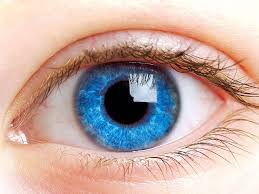WALA remedies GmbH
ECHINACEA E planta tota D 3 globules
ECHINACEA E planta tota D 3 globules
Couldn't load pickup availability
ECHINACEA E planta tota D 3 globules
Pack size:20 g Dosage form:Globules
Echinacea e planta tota D3, globules. Active ingredient: Echinacea pallida e planta tota ferm 33c. Indications: According to anthroposophical understanding of humanity and nature. These include: For the harmonization of sensory organization in feverish, inflammatory, localized, and systemic processes, e.g., furunculosis, poorly healing wounds, inflammation of the uterine appendages (adnexitis), inflammation of the pelvic connective tissue (parametritis), inflammation of the uterine lining (endometritis), inflammation of the lymph nodes (lymphadenitis), and flu-like infections.
For risks and side effects, read the package insert and ask your doctor or pharmacist.
INSTRUCTIONS FOR USE: INFORMATION FOR THE USER
Echinacea e planta tota D3, Globuli velati
Active ingredient: Echinacea pallida e planta tota ferm 33c
Composition:
10 g of Globuli velati contains: Echinacea pallida e planta tota ferm 33c Dil. D3 1 g (HAB, Vs. 33c). Contains sucrose (sucrose/sugar).
Indications:
According to anthroposophical knowledge of man and nature. These include: For the harmonization of the sensory organization in feverish, inflammatory, localized and systemic processes, e.g. furunculosis, poorly healing wounds, inflammation of the uterine appendages (adnexitis), inflammation of the pelvic connective tissue (parametritis), inflammation of the uterine lining (endometritis), inflammation of the lymph nodes (lymphadenitis), flu-like infections.
Contraindications:
This medicine should not be used in cases of hypersensitivity to the active ingredient or to other members of the Asteraceae family. As a general rule, Echinacea e planta tota D3 should not be taken in cases of progressive systemic diseases such as tuberculosis, leukemia or leukemia-like diseases, inflammatory connective tissue diseases (collagenosis), multiple sclerosis, AIDS, HIV infections, chronic viral diseases, and other autoimmune diseases.
Precautions for use and warnings:
There is insufficient documented experience with the use of Echinacea e planta tota D3 in children under 4 years of age. It should therefore not be used. This medicine contains sucrose. Please only take Echinacea e planta tota D3 after consulting your doctor if you know that you have an intolerance to certain sugars.
Dosage and method of administration:
Unless otherwise prescribed:
- Children aged 4 to under 6 years: Dissolve 3 to 5 Globuli velati under the tongue 1 to 5 times daily.
- Children aged 6 to under 12 years: Dissolve 5 to 10 Globuli velati under the tongue 1 to 5 times daily.
- Adults and children aged 12 and over: Dissolve 10 to 15 Globuli velati under the tongue 1 to 5 times daily.
Duration of use:
Treatment of an acute illness should be completed after 2 weeks. If no improvement occurs within 5 days, consult a doctor. The duration of treatment of chronic illnesses requires consultation with a doctor.
Side effects:
Very rarely, hypersensitivity reactions may occur. Skin rash, itching, and rarely, facial swelling, shortness of breath, dizziness, and a drop in blood pressure have been observed with medicines containing echinacea preparations. In these cases, you should discontinue use of the medicine and consult your doctor.
Contents:
20 g.
Pharmaceutical Entrepreneur and Manufacturer:
WALA Heilmittel GmbH
Dorfstraße 1,
73087 Bad Boll/Eckwälden.
This leaflet was last revised in January 2025.
Source: Information from the Wala catalog,
as of: 04/2025.
Active ingredient: Echinacea pallida e planta tota ferm 33c. Indications: According to anthroposophical understanding of man and nature. These include: For the harmonization of the sensory organization in feverish, inflammatory, localized, and systemic processes, e.g., furunculosis, poorly healing wounds, inflammation of the uterine appendages (adnexitis), inflammation of the pelvic connective tissue (parametritis), inflammation of the uterine lining (endometritis), inflammation of the lymph nodes (lymphadenitis), and flu-like infections.
Share



